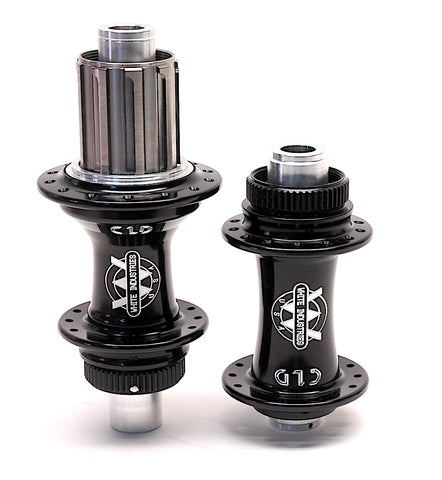We've been doing this bike wheels thing for a while now, and there's one constant .... hubs are an investment. Buy wisely, and buy once.
A good set of hubs will last several sets of rims. We recommend spending at least as much on hubs as the rest of the wheelset.
Why? Aren't the rims the core of a wheelset?
As we see it, rims are somewhat consumable. Certainly in the case of rim brake rims, as wear on the brake tracks will one day compromise rim integrity, and they'll need to be replaced.
With the emergence of disc brakes on most quality bikes, it's easy to assume that these rims don't wear, and will last forever. This is not the case.
Everything reaches end of life. Disc rims will die one day, but his day is a lot further away than for rim brake rims. In the case of alloy rims. metal fatigue at the eyelets could occur, and one day they'll crack there. Or perhaps some alloy corrosion will take hold. In either case, alloy disc rims should last many years, even under the most powerful or frequent riders.
Carbon is (in theory) a different story. If appropriately engineered (for purpose) carbon fatigue limits far exceed aluminium alloys. Therefore one might assume that carbon disc rims will last even longer than alloy. In practice the difference is not as stark. Being largely a high performance product, carbon rims are often built to be super light, lessening the potential fatigue life.
There is another disadvantage to super light carbon rims; all this focus on "super light weight" results in a direct compromise in impact strength (and lateral stiffness).
The lighter a rim is made, the less strong it will be (all other things being considered equal), and the less resistant to deflection it will have.
The strength compromise can lead to failure with carbon disc rims - in the case of low tyre pressures resulting in rim impacts on the ground surface (the classic "rock strike"). This is by far the most common killer of carbon MTB rims, and not warrantable.
As a result, XLR8 has a conservative approach to speccing carbon and alloy disc rims. A rider is highly unlikely to notice the additional 5% rim weight, but will appreciate the lateral stiffness (better acceleration, more direct handling), and will certainly be happier to avoid rim delamination from impact strikes.
We build wheels for you, your aspirations, and to last. Not for maximum profit margin. Pay a little more for your hubs - they should be with you for a long time.

